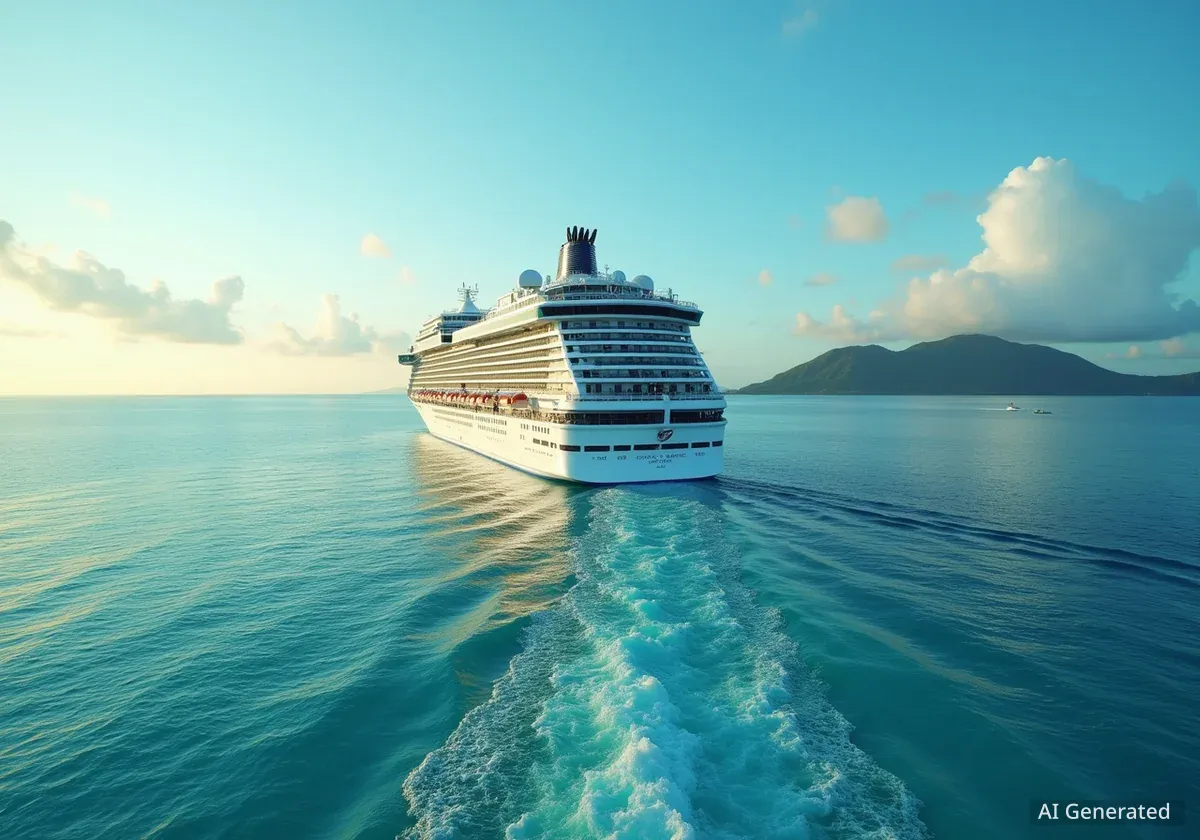A new forecast predicts that a record 21.7 million Americans will take an ocean cruise in 2026, marking the fourth consecutive year of significant growth for the industry. The report, a collaboration between AAA and Tourism Economics, highlights sustained demand for cruise vacations and identifies the most popular destinations and departure ports for U.S. travelers.
Key Takeaways
- An estimated 21.7 million Americans are projected to cruise in 2026, up from 20.7 million in 2025.
- The Caribbean remains the dominant destination, attracting 72% of all American cruise passengers.
- Florida is home to the top three busiest cruise ports in the world: Miami, Port Canaveral, and Fort Lauderdale.
- The data indicates a consistent post-pandemic recovery and expansion in the U.S. cruise market.
Sustained Growth in Ocean Cruising
The cruise industry is experiencing a period of robust expansion, with passenger numbers from the United States steadily climbing each year. Projections show a clear upward trend that began after the global travel downturn.
According to the forecast, the number of American cruisers has increased consistently. In 2023, 16.9 million Americans took a cruise. This figure grew to an estimated 19.1 million in 2024 and is expected to reach 20.7 million in 2025 before hitting the record 21.7 million in 2026.
This multi-year growth demonstrates strong consumer confidence in cruising as a preferred vacation option. The industry's ability to attract both new and repeat passengers is a key driver of this expansion.
Understanding the Data
The projections are based on a cooperative study by AAA, a major leisure travel agency, and Tourism Economics, a company specializing in global travel data and forecasting. Their analysis considers booking trends, economic factors, and industry capacity to model future demand.
Caribbean Dominates as Top Destination
The Caribbean continues to be the most popular cruise destination for Americans by a wide margin. In 2026, an overwhelming 72% of U.S. passengers are expected to sail to this region.
The enduring appeal of the Caribbean is partly driven by the rise of shorter-duration cruises. These 3- to 5-day itineraries offer convenience and affordability, making them accessible to a broader range of travelers. Cruise lines favor these shorter trips as they allow for more frequent sailings and higher cabin turnover.
“These numbers reflect the growing demand for ocean cruises among U.S. travelers,” said Stacey Barber, vice president of AAA Travel. “Whether it’s an anniversary trip to relax in the Caribbean or a family reunion to explore Alaska, ocean cruises offer variety, convenience, and lifelong memories.”
While the Caribbean holds the top spot, other destinations also attract a significant number of American cruisers. Alaska is the second most popular choice, accounting for 7% of passengers, followed by the Mediterranean at 5%. The remaining 16% of travelers are choosing itineraries in other parts of the world, including Europe, Mexico, and Hawaii.
Top Cruise Destinations for Americans (2026 Projections)
- Caribbean: 72%
- Alaska: 7%
- Mediterranean: 5%
- Other Global Destinations: 16%
Florida's Ports Lead the Nation
The forecast also identified the busiest cruise ports for passenger embarkations and debarkations, with Florida solidifying its position as the center of the U.S. cruise industry. The state is home to the three busiest ports in the analysis.
The Port of Miami is projected to be the busiest, handling 10.2% of all passengers. Port Canaveral, serving the Orlando area, follows closely at 8.8%. Fort Lauderdale's Port Everglades comes in third with 5.6% of the passenger traffic.
Together, these three Florida ports are expected to manage nearly a quarter of all American cruise passenger movements, highlighting their critical role in the industry's logistics and infrastructure.
Busiest Cruise Ports by Passenger Share
- Miami, Florida: 10.2%
- Port Canaveral, Florida: 8.8%
- Fort Lauderdale, Florida: 5.6%
- Galveston, Texas: 4.1%
- Barcelona, Spain: 3.9%
Outside of Florida, Galveston, Texas, has emerged as a major hub, ranking fourth with 4.1% of passengers. Its strategic location provides access to Caribbean itineraries for travelers in the central and southern United States. Notably, Barcelona, Spain, is the only non-U.S. port in the top five, underscoring its importance as a gateway for Mediterranean cruises.
Factors Driving Cruise Popularity
The continued growth in cruising can be attributed to several factors. Industry experts point to the perceived value of a cruise vacation, where accommodation, meals, and entertainment are often included in a single price. This simplifies budgeting for many families and travelers.
Modern cruise ships have also evolved into destinations themselves, offering a vast array of amenities such as water parks, Broadway-style shows, specialty dining, and advanced spa facilities. This onboard experience appeals to a wide demographic, from multi-generational families to couples seeking a relaxing getaway.
The convenience of visiting multiple destinations without the need to pack and unpack is another significant draw. Passengers can explore several countries or islands in a single trip, making it an efficient way to travel. The industry's investment in new, larger, and more innovative ships continues to generate excitement and attract first-time cruisers looking to experience the latest offerings.





